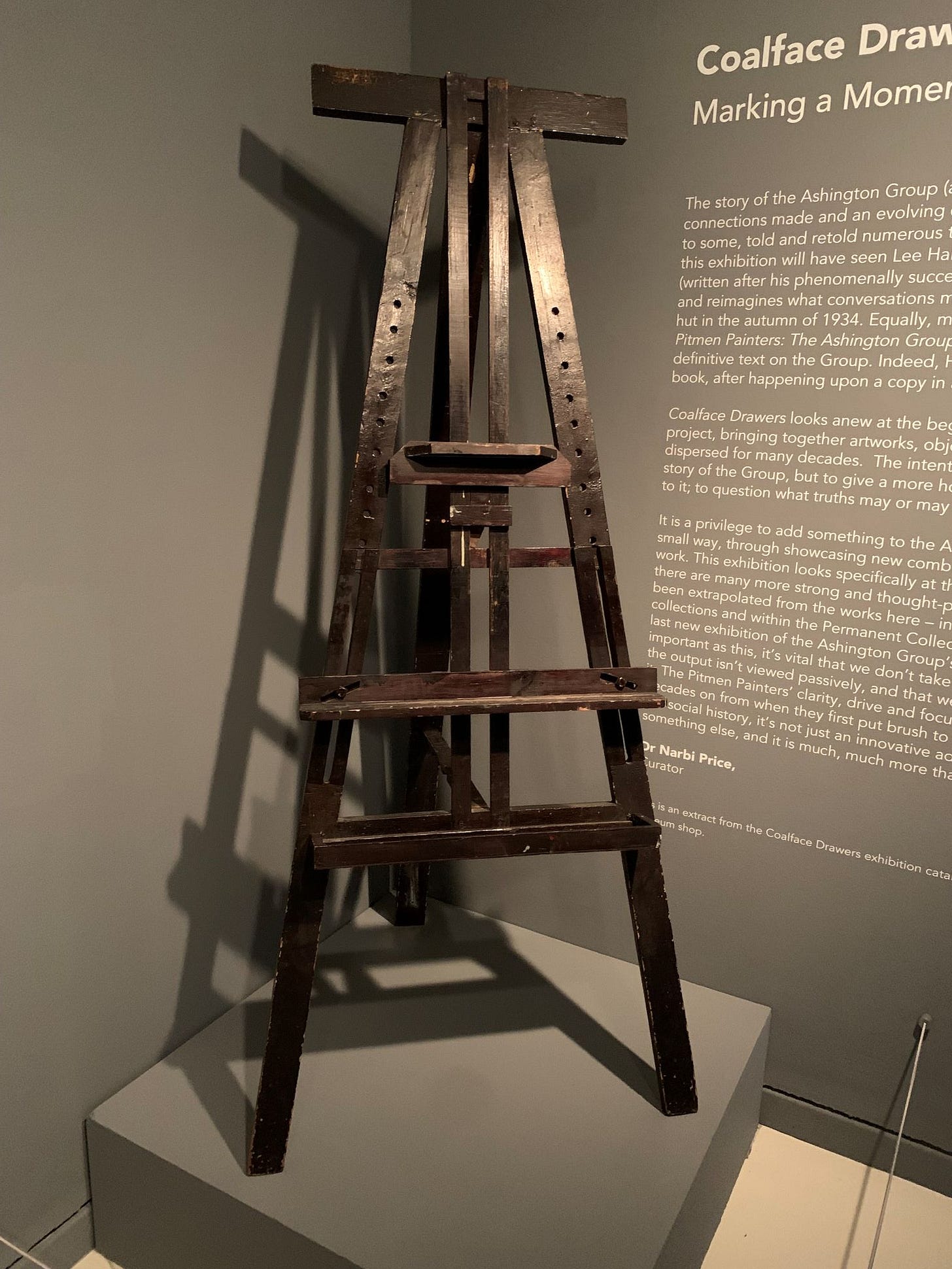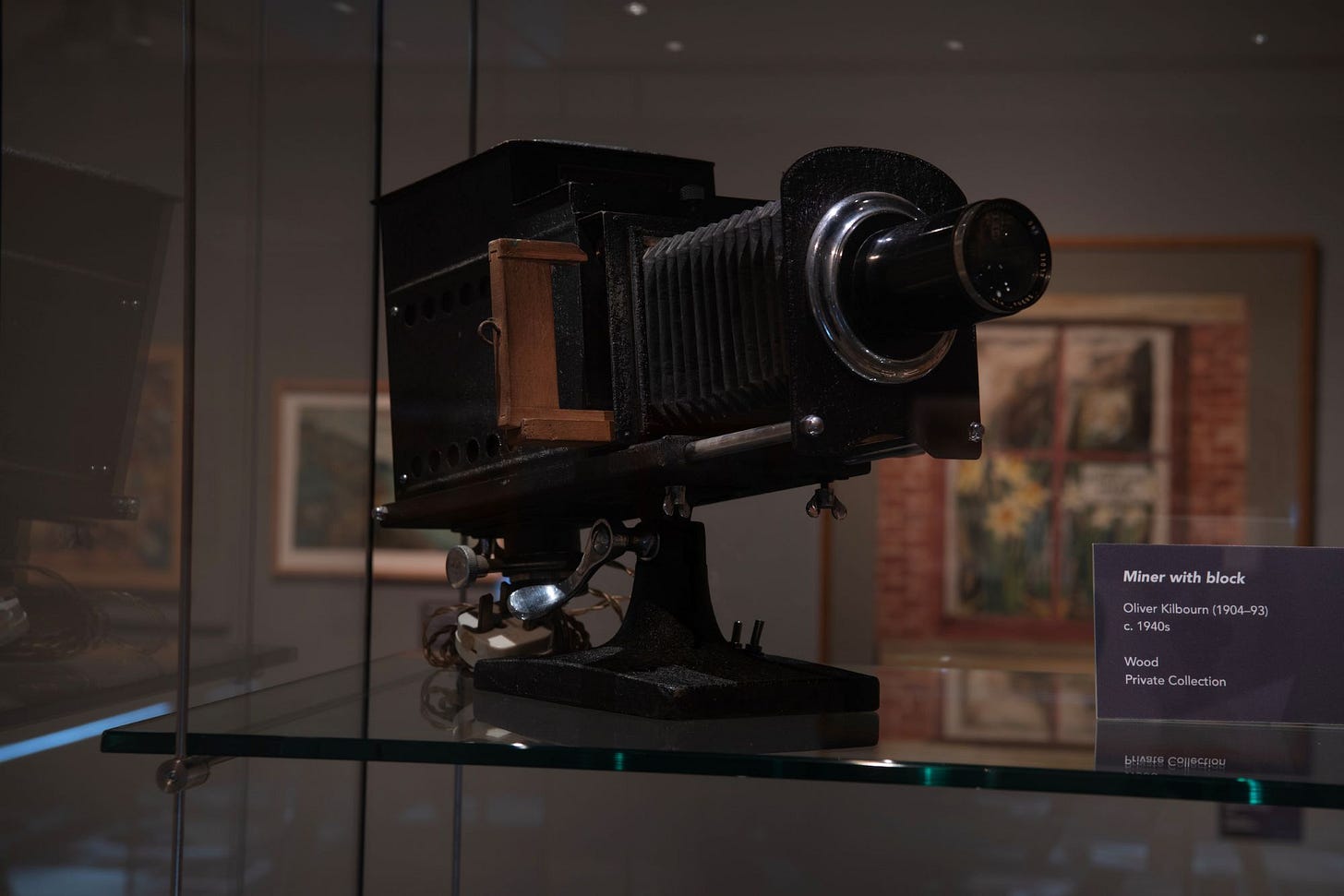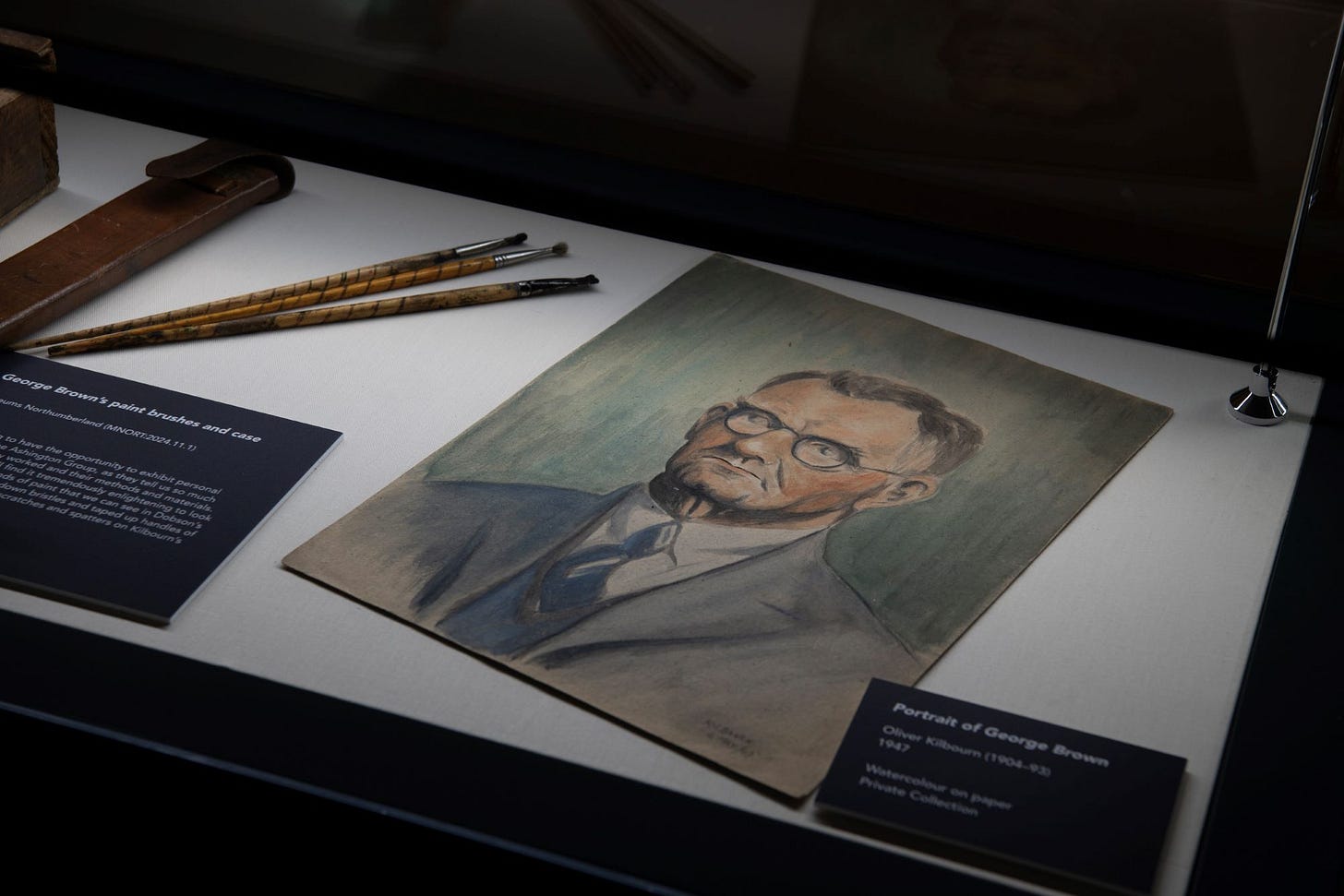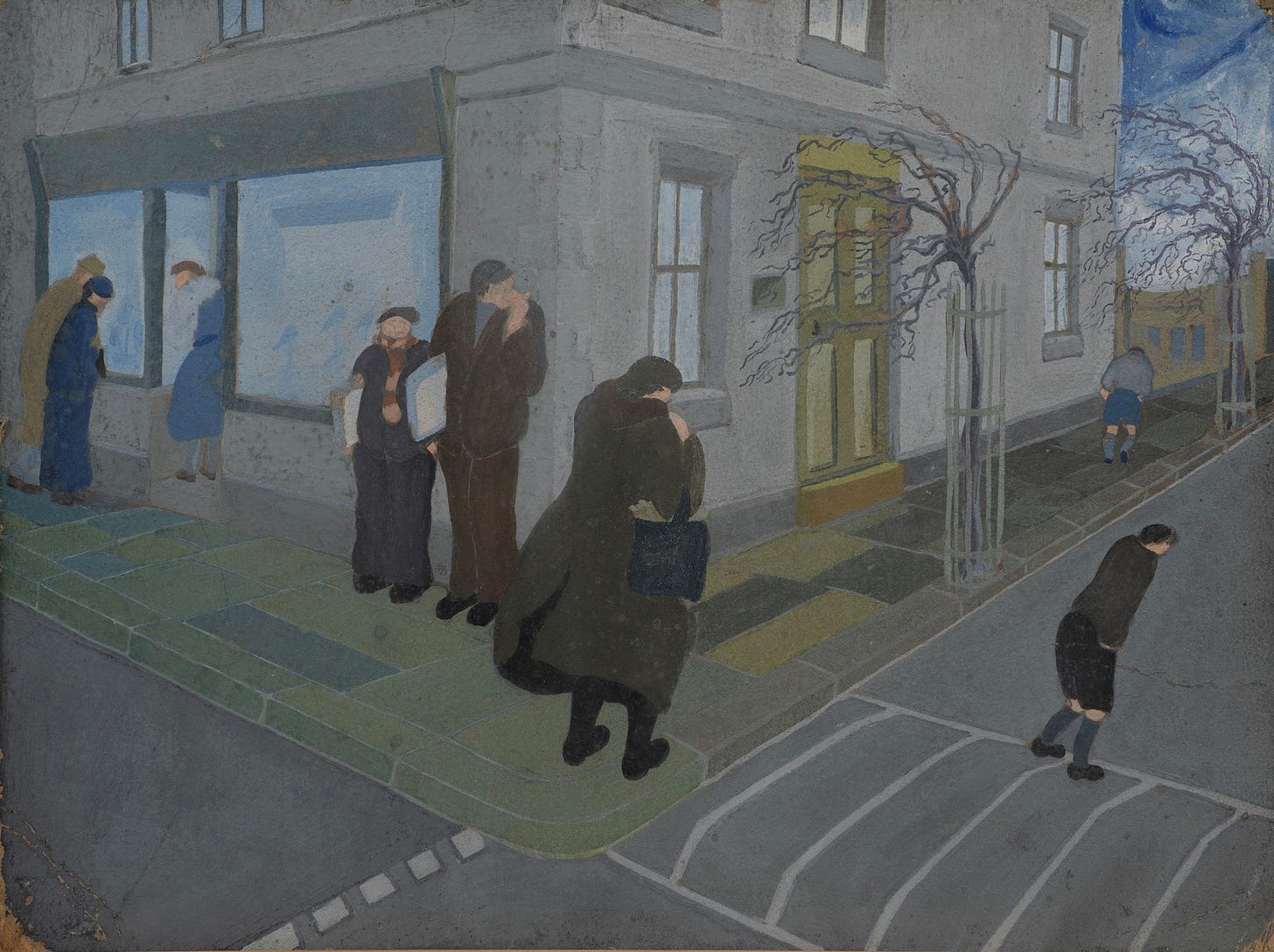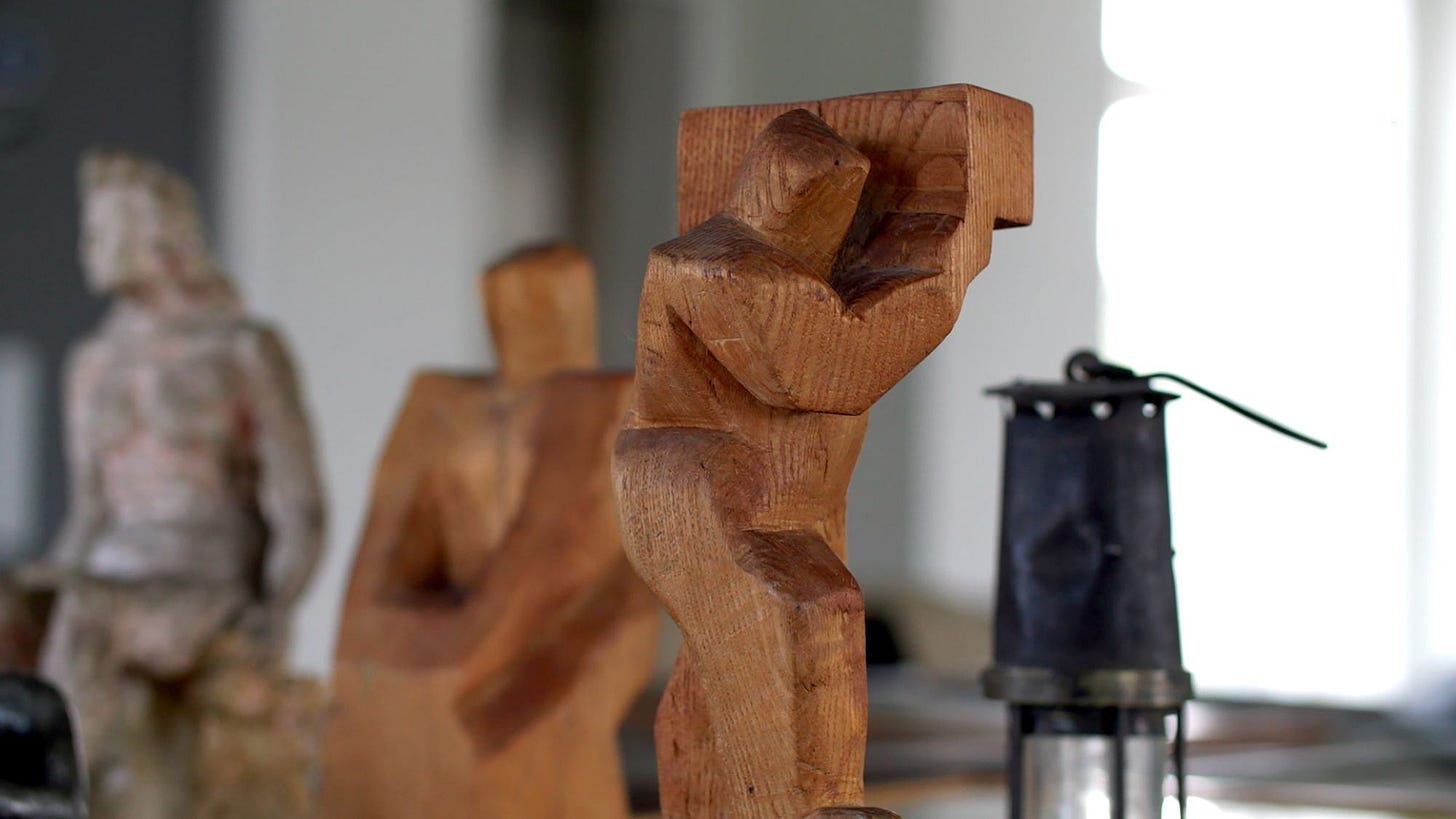Exhibition for the eyes and ears
Dr Narbi Price, artist and Ashington Group expert, shows David Whetstone round the final pitmen painters anniversary exhibition at Woodhorn
Narbi Price knows the work and lives of Ashington’s ‘pitmen painters’ better than most.
He studied them for his PhD, helps to manage their legacy as an Ashington Group trustee and curated Coalface Drawers: 90 Years of the Pitmen Painters, the concluding anniversary exhibition at Woodhorn.
Imagine his feelings, then, when the chance came to hear the men speaking in their pre-war heyday.
Archived by the BBC on fragile acetate discs mounted on glass was a radio programme about Ashington’s celebrated amateur artists.
Some 17 minutes of it survives on the two discs on show in the exhibition.
According to the accompanying script – everything was scripted in those days – The Pleasures of Painting was broadcast at 8.40pm on Monday, January 16, 1939.
The Radio Times described it: “Confessions and criticisms by The Ashington Group. Led by Robert Lyon.”
Lyon was the lecturer who would travel up from what is now Newcastle University to lead a course in art appreciation in the men’s hut.
The discs were among items held by Robert Lyon’s family who, says Narbi, have always been very supportive, recognising the historical significance of what they had.
But they had never played the discs.
“Didn’t have the technology,” says Narbi.
He enlisted the help of friends, one equipped to play old 78 rpm records and another able to digitise what, if anything, might still be on the discs for the Ashington Group archive.
That was the big question. Would there be anything to hear?
“To the best of our knowledge the programme wasn’t repeated but you can only play this sort of disc about six times and that’s it, so this was a nerve-wracking process,” says Narbi.
“When the needle dropped for the first time, clouds of dust came up as it was literally cleaning the grooves.
“So in the end we played them twice, once to clean and once to record.”
Narbi could probably recite the broadcast from memory now. But recalling the moment when he first heard the voices reaching out across the decades, he says: “It was surprisingly emotional.
“You can tell they’re trying to smooth out their accents a bit, including Robert Lyon actually. They’re trying their best to speak BBC English.
“But they warm up and get more into it by the end.”
Well, sort of. You can hear the recording in the exhibition and while it was meant to let BBC listeners eavesdrop on a typical Ashington Group class, it sounds amusingly stilted today.
The engrossing exhibition focuses on the early years of the group, the period that will be familiar to people who remember Lee Hall’s hit play, The Pitmen Painters.
A highlight is Robert Lyon’s projector, a replica of which was seen being carried on stage in one of the play’s early scenes.
Narbi says it has been donated to the museum by Lyon’s granddaughter, Charlotte, who lives in Amsterdam. “She remembers seeing this dusty old projector in her grandad’s studio when she was growing up.”
One of his aims as curator, says Narbi, was to bring “the human element” back into the story of the pitmen painters.
"We’re so used to seeing the permanent collection at Woodhorn and I was looking at how we could keep the story alive. You want people to keep coming back.
“I think these personal stories and artefacts help with that.”
Oliver Kilbourn’s easel stands resplendent in one corner and a clearly well-used paintbox owned by William John Dobson along with George Brown’s brushes are also on show.
A woodblock print you’ll recognise if you saw Lee Hall’s play is on show for the first time, along with others given to the museum 30 years ago by the family of Harry Wilson.
It shows a miner literally chained to his labour and Narbi, himself an accomplished artist, calls it “really sophisticated”, pointing out the dynamism of the composition.
Often defined collectively as pitmen painters, Coalface Drawers is a reminder that Robert Lyon’s students were quite a disparate bunch and not all Northumbrians born and bred.
“On the recording you don’t only hear Northumbrian accents,” says Narbi.
“You can tell Robert Lyon was from the North West and George Blessed, who was (actor) Brian Blessed’s uncle, has a broad Yorkshire accent.
“There was a lot of economic migration around coalmining back then.”
Not all of them were miners although they lived in a pit village. Harry Wilson was a dental technician and the Radio Times description of the radio programme references insurance agents and teachers.
As far as Narbi can discover, it was only Oliver Kilbourn and Jimmy Floyd who actually worked underground.
And coincidentally it is pen and ink drawings by this pair that suggest at least some of the men were keen hobby artists before Robert Lyon was sent to Ashington by the Workers’ Educational Association.
Narbi believes Kilbourn’s carefully drawn views of Ashington were probably copied from postcards and Floyd’s more dramatic images from books but they show a degree of skill.
Also on show are some pictures by Robert Lyon.
“I was really keen to put him back in a position whereby he’s an artist as well as a foil to the Ashington Group story,” says Narbi.
“His family have been really helpful and acquiescent to us telling the story of their grandad that resonates more with their memory of him rather than the hoity toity fella in the play.”
Lyon, says Narbi, was a Scouser and a socialist who went to the Royal College of Art on a scholarship and took a risk when he started encouraging the Ashington men to appreciate art through having a go.
“There was a WEA clause saying people couldn’t teach anything that might become an occupation.”
Lyon apparently kept in touch with the Ashington Group artists throughout his life (he died in 1978) and after the war took a career break, helping to deradicalise members of the former Hitler Youth.
As well as the previously unseen works, the exhibition includes old favourites such as William Scott’s painting The Bedlington Terrier with its idiosyncratic sense of scale.
Narbi says the unique thing about the Ashington Group artists was their clarity and focus.
“They had this very singular idea of what they were trying to communicate from pretty much the beginning right to the end and all going back to the tenets instilled by Robert Lyon.
“And he had the nous in the mid-1930s to encourage them.
“He wrote his MA thesis about the Ashington Group and kept in touch all the way through. I’ve read his thesis and in the back cover are the letters they sent to him. It was a genuine long term relationship.”
Coalface Drawers runs until January 5, 2025. For details go to the Woodhorn Museum website.





